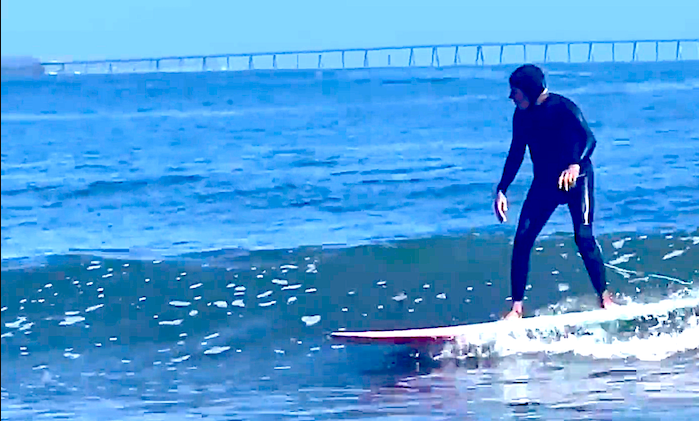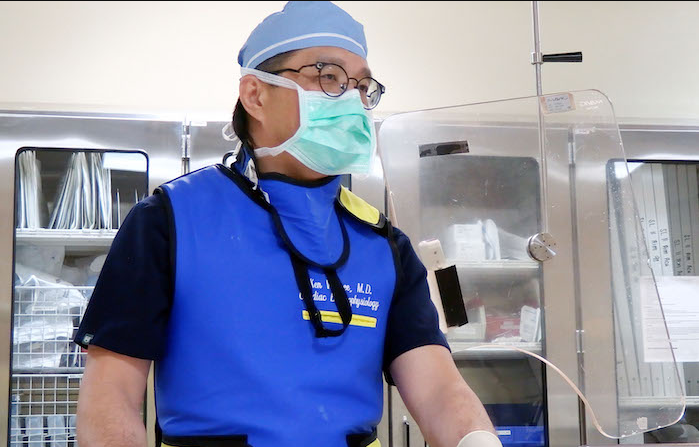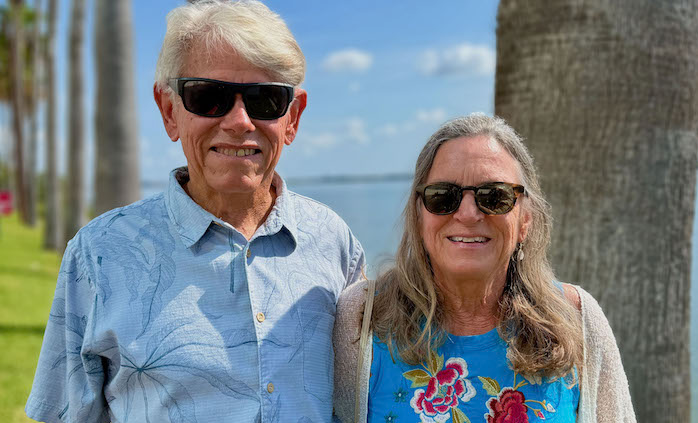Pacemakers have come a long way since they were first introduced in 1958
BREVARD COUNTY, FLORIDA — Surfboards and pacemakers don’t usually go hand in hand — but for Kevin Ruddick, a 70-year-old Brevard County resident and lifelong surfer, it turned out to be the perfect pairing.
Thanks to Dr. Ken Lee, a cardiac electrophysiologist at Health First, Ruddick is on his way back to the waves with a new rhythm — and a renewed quality of life.
Pacemakers have come a long way since they were first introduced in 1958. Currently, about 200,000 pacemakers are placed in patients annually. Traditionally, these devices require a chest incision and wires (or leads) that connect a generator to the heart.
Over time, those wires can dislodge, break or become infected — and for active patients, the device’s size and placement can interfere with daily life.
That’s where a newer option, the Abbott Aveir leadless pacemaker comes in.
About the size of a vitamin, the device is implanted directly into the heart through a vein in the leg. No wires. No chest scars. Most patients can’t feel it’s there. And for people like Ruddick — who still surfs, gardens and practices yoga — it’s a life-changing option.
“The Aveir is a seminal technology in the evolution of cardiac pacing,” Lee said.
“The special feature of this technology is that it maintains or improves a patient’s quality of life but not serve as a hindrance in any way. For patients who are active, this technology is highly preferred — and Mr. Ruddick is an active surfer, so that would be a perfect technology for him.”
Patients in Florida, especially in the Space Coast, are very active, whether it is surfing, swimming, golfing, playing pickleball, or playing tennis.
Thanks to Dr. Ken Lee, a cardiac electrophysiologist at Health First, Kevin Ruddick is on his way back to the waves
with a new rhythm — and a renewed quality of life. (Health First video image)
Patients in Florida, especially in the Space Coast, are very active, whether it is surfing, swimming, golfing, playing pickleball or playing tennis. Cocoa Beach is arguably the surfing capital of the East Coast and home of the 11-time world surfing champion Kelly Slater.
Ruddick received a dual-chamber Aveir leadless pacemaker, which includes two tiny devices — one placed in the right atrium and one in the right ventricle — both implanted by Lee. The two units communicate wirelessly using high-frequency signals, allowing the heart’s upper and lower chambers to stay in sync, just like a traditional dual-lead pacemaker, but without physical wires.
The procedure also happened to mark Lee’s 500th leadless pacemaker implant — a quiet but meaningful milestone for Health First and its growing leadership in cardiac innovation.
Dr. Ken Lee, a cardiac electrophysiologist at Health First, has helped more than 500 patients restore their
heart rhythm with a minimally invasive leadless pacemaker. (Health First image)
For Ruddick, the symptoms crept in gradually — fatigue, sluggishness, and a heart rate that would occasionally dip below 40 beats per minute. As the condition progressed, it not only disrupted his daily life but also posed a growing risk to his health.
“I’ve been dealing with the symptoms for a while and watching them,” Ruddick said. “And I finally got to a point where the pacemaker was required.”
He did his research, consulting with multiple hospitals and seeking second opinions. But it was a conversation with a fellow surfer in California that changed everything.
“He said he’s been through four pacemakers since the ‘90s… and he’s ripped them all out because of the wires,” Ruddick said. “He said that he got the leadless and it’s like night and day.”
That led Ruddick back to Health First, where he was relieved to find the procedure available close to home — and in the hands of a physician experienced with technology.
“I didn’t know at first that Dr. Lee did the leadless procedure,” he recalled. “But once I found out, it was a no-brainer. He’s such a good person and so well educated. I thank my lucky stars I found him when I did.”
The minimally invasive procedure typically takes about 30 minutes. Patients are monitored for a few hours afterward and usually go home the next day.
“We actually ask the patient to just take it easy for the first week or so,” Lee explained. “No heavy lifting, no vigorous exercise.”
Kevin Ruddick and his wife Pamela are all smiles after a successful heart procedure that helped him return to the active life they enjoy together. (Health First image)
Within five days, Ruddick was feeling noticeably better — so much so that Lee had to remind him to slow down. He had already started doing too much and was advised to give the small incision time to fully heal.
Now, he’s preparing for a trip in mid-Aug. — something that might have felt out of reach just weeks earlier.
Lee’s passion for cardiac technology is both personal and professional. He has a background in electrical engineering and has practiced as a cardiac electrophysiologist since 2007. But his interest in pacing took on new meaning when his father — while driving — passed out and drove off the road; his father required a pacemaker.
“That’s where the fascination in this technology began,” Lee said. “Seeing these devices in action really is very humbling — to go from seeing such a small device and making such a huge impact in patients’ lives…every day. I truly very lucky to be a part of the much-needed evolution of pacing.”
Still, he emphasizes that success is never a solo act.
“It takes at least 15 people to bring a patient in and have a successful outcome,” Lee said. “From the nurses to the techs to the support staff, this is a team effort. And Health First is committed to providing the very best for our community.”
Health First was among the early adopters of the Aveir leadless pacemaker in Florida,
offering patients across Brevard County access to this advanced, minimally invasive technology. (Health First video image)
Health First was among the early adopters of the Aveir leadless pacemaker in Florida, offering patients across Brevard County access to this advanced, minimally invasive technology.
Ruddick says he’s grateful that this type of care is available locally.
“I feel good too that Health First is here to serve maybe my friends who may need this procedure in the future,” he said. “And other people like me in the county and the area that would need this.”
For patients exploring their options, Lee offers reassurance.
“I think when they come to Health First, they can be reassured there is a menu of options,” he said. “If you want to be active, you want technology to not be a hindrance to your lifestyle. We have a range of options for those patients.”
And for Ruddick, who once felt held back by his condition, the procedure has been nothing short of transformative.
“This one thing was really holding me back from the type of life that I wanted to live,” he said.
Now, he’s regaining control — one wave at a time.
Thanks to Dr. Ken Lee, a cardiac electrophysiologist at Health First, Kevin Ruddick, above,
is on his way back to the waves with a new rhythm — and a renewed quality of life. (Health First video image)




